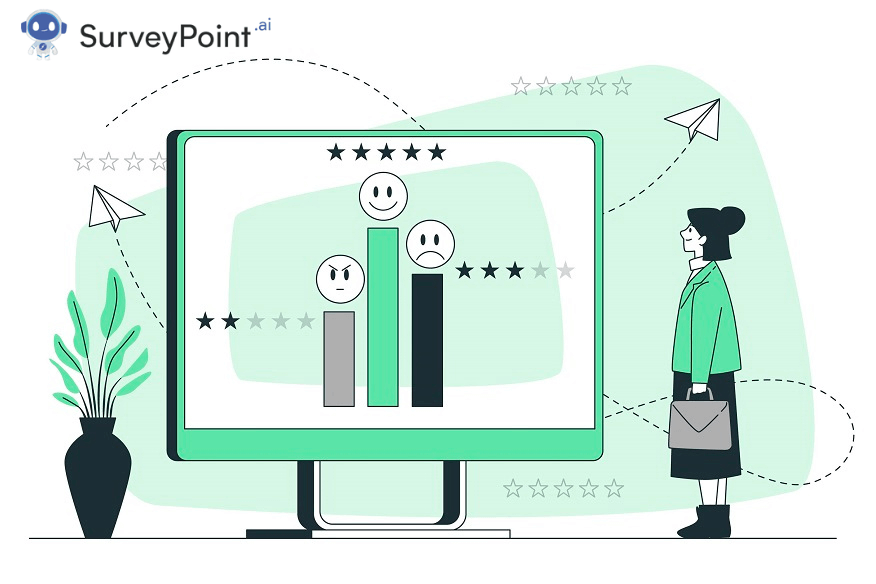
Separating a disease from its symptoms is a common practice in the medical field. Let’s say that a man suffers from excruciating abdominal pain on a specific day. He comes up to the doctor and is given a prescription for pain medication, antacids, and the recommendation that he obtains an upper abdominal USG. The USG confirms the man has gallstones and calls for immediate surgical intervention. Therefore, the man had stomach cramps as his symptom and gallstone as his problem. Similarly, the customer experience challenges associated with RCA models also exhibit a problem-symptom relationship.
On the other hand, in the business world, it’s not uncommon for symptoms and issues to be confused with one another. Companies sometimes develop band-aid remedies based on consumer behavior studies rather than addressing the root cause of customers’ distress.
Hence, the whole process remains futile and a waste of resources. On top of that, if such practices are repeated multiple times, a company’s sustainability in the customer-centric business receives terrible blows.
Business Teams Should Focus On RCAs Vigilantly
When it comes to deploying business objectives and managing quality standards and customer experience concerns simultaneously, the root cause analysis (RCA) approach is a staple of Total Quality Management (TQM).
TQM is committed to using RCA models since they aid businesses in efficiently researching the root cause of an issue, which can be difficult to pinpoint without such guidance. Implementing Root Cause Analyses (RCAs) by well-honed TQM teams can help avoid mistaking symptoms for causes.
How Is A RCA Model Built?
The RCA skeleton model is based on three common questions. These questions act as a basic guideline to prepare the deep structure of the same model. The questions are:
- Defining what happened ( fetching the real problem)
- Why did it happen?
- What can be done to prevent its future occurrence?
In the following section, we will understand how the deep structure of this RCA model gets prepared based on the above question.
RCA Model To Tackle Customer Experience Challenges
It is a 5 step process that directly gets implemented in real-life scenarios to disburse symptoms and trace the origin of the problem. The model also discusses suggestive precautionary methods to abolish any future occurrence of the same problem— creating customer experience challenges. Let us look at these steps one at a time:
Step 1: Defining the problem
This step is all about analyzing surface-level identifiable symptoms and deriving a problem statement.
Step 2: Jotting data
When researchers analyze customer experience challenges, they often focus on the symptoms of an underlying problem. A top-notch RCA requires researchers to collect as many identifiable symptoms as possible. In this way, the issue can be better addressed.
To conduct such engrossing symptom investigation missions, researchers can rely highly on:
- Case studies
- Incident investigation patterns
- Accident analysis models
Step 3: Underlining causal factors
With the right set of data in hand, researchers must look out further for relatable causal factors such as many as possible. Sometimes these casual factors can lead a researcher to identify the origin of a problem. It is, therefore, important not to ignore casual symptoms.
Step 4: Determining the problem
Researchers must follow the trace-back model from the point of symptoms to the point of origin in order to alleviate customer experience challenges.
Step 5: Precautionary action plan
The researchers can develop an action plan mentioning timelines once they have pinpointed the cause of the customer experience challenge.
RELATED: Popular Data Collection Methods To Draw Meaningful Conclusions
RCA Model To Track Customer Experience Challenges
For a company, customer experience challenges can recur at different customer touchpoints. Though each of these challenges is unique and demands a unique solution, keeping a basic RCA guideline ready at hand is not a bad idea to solve them all. Know how:
1. Build a local team
A team should be chosen from the locality of primary investigation regarding the symptoms. A subject matter expert who knows the region’s social structure and demography can also participate in this team.
2. Jotting down customer experience data
This part basically compiles all the scattered customer experience data at one point. The step is primarily based on two ways:
2.1. Jotting down operational data
Operational data talks about metrics regarding cancellations, average order value, customer churn, customer retention, and the total number of products or services used by consumers.
The metrics vary as per company standards and industry profiles. It encompasses advantages that would otherwise be missed by customers to be utilized by them.
2.2. Experimental data
Companies should actively collect customer service complaints, online reviews, and survey feedback regularly to unearth the key route of customer service-related problems. These are highly voluntary data but can yield fruitful results for companies if routinely collected.
SurveyPoint has built its state-of-the-art customer satisfaction survey forms to make capturing this wide range of information easier. Often, it has made it possible for a company to hear from customers in a particular sector or region about their experience with a given product or service. Survey results were used to investigate all possible explanations for customers’ complaints.
3. Analyze vigorously
A closer look at the collected customer experience data can highlight the customer demands and product offerings. Accordingly, businesses can fine-tune their product or service quality based on these.
Knowing these gaps, your team can improve their services by following the steps below.
- Add geographical or time limitations regarding a product’s delivery
- Refrain from accepting the NPS score because the current ROI exceeds lower scores.
- Explain the brand’s acceptable minor limitations concerning the product’s delivery, certain features, and benefits – while emphasizing its positive aspects.
As A Final Note
In order to intelligently address any problems with the customer’s experience, it is necessary to do a thorough root cause analysis using the appropriate data.
For businesses to address real problems faced by customers, there is no shortage of platforms that provide access to reliable data.
SurveyPoint is making waves right now because it makes it easier for startups and new entrants to the business world to connect with their target audience. Enriched with 360-degree analytical features, the tool gives businesses an insight into how their customers feel about their products or services.
Learn to work smarter, not harder!
Use our intuitive survey dashboard panel to identify respondents in even the most niche markets.
Free Trial • Cancel Anytime • No Credit Card Required




